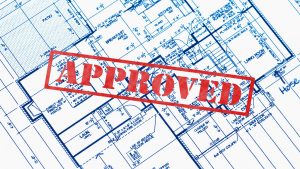The City of Calgary plans to appeal a court decision that scrapped safety charges against an engineering firm. City officials believe that, if ruled on, the appeal could set an important precedent to help prosecute for unsafe construction sites.
In July, Judge Glen Poelman reversed a previous ruling under the provincial Building Code legislation that would have punished an engineering company for alleged unsafe practices.
According to Judge Glen Poelman, the previous judge erred in ruling Williams Engineering Canada Inc. is accountable for unsafe repairs undertaken at a Calgary building parkade in the summer of 2011.
"It sets a very high bar for us to be able to prove unsafe condition," said municipal prosecutor for the City of Calgary Ola Malik.
"You shouldn’t have to wait for bodies in the rubble."
Poelman’s written decision explained that Judge Heather Lamoureux disregarded a credible expert and was ambiguous in the legal standards in her decision last November.
According to court documents, the Rocky Mountain Court building parkade on 6th Avenue required waterproofing repairs due to water leakage.
Part of the job required the removal of the concrete wearing surface known as the topping slab, which covered a portion of the hollow core concrete slab.
The city began investigating in July 2012, after a citizen expressed concern over the installation of shoring posts at the building. Investigators observed deep cuts had been made into the top portion of the precast hollow core slab forming part of the parkade’s structure.
A city inspector became concerned that the steel cables located in the concrete slabs may have been damaged by the cutting.
He formed the opinion that the building was not safe and its tenants were vacated.
The city argued that experts with Williams Engineering did not properly verify the required depth of the cuts into the concrete, putting the building’s tenants in danger.
According to Poelman’s decision, Lamoureux should also have taken Williams Engineer James Gilliland’s assessment into account.
She called his assessment "retrospective analysis" holding that "one cannot conclude that a structure is safe simply because it held up and was not subject to catastrophic failure."
Poelman wrote that this was an unreasonable reading of his evidence and overriding error.
"Gilliland made a careful assessment of the building’s actual condition beginning in July, following it carefully until his firm was dismissed by RMC’s board in late 2011," reads his decision.
"There is no reason to believe Williams Engineering was cavalier about safety."
He argued that if anyone’s opinion is a retrospective analysis, it is the city expert whose work was not conducted until after the charges were laid.
Poelman said the provincial court also was ambiguous on the test used for determining "unsafe condition."
"The sections under which Williams Engineering is charged do not create an offence for allowing standards to fall below Building Code, but for causing, allowing or maintaining an unsafe condition. The two are not necessarily the same."
He concluded there is at least reasonable doubt and acquitted the Williams Engineering of all charges.
However, the concept of a building element being in an "unsafe condition" still isn’t clear as no court has given a definitive ruling on it.
"There is no judicial interpretation that I’m aware of what it means to be in an unsafe condition," said Malik.
The city hopes that if the case is accepted on appeal, it will set an important precedent in the province for prosecuting unsafe construction.
The city began cracking down on construction violations in 2008, after a toddler was killed by a falling piece of sheet metal stored on a roof.
Officials lobbied for higher fines, which were eventually increased from $15,000 for a first offense to $100,000.
If the appeal is accepted and successful, the higher fines wouldn’t apply to the Williams Engineering as the case happened before the change.
The city also created the Safety Responses Unit (SRU). The SRU leads a Coordinated Safety Response Team with the objective of protecting public safety by identifying issues, investigating incidents and correcting unsafe issues.
The SRU has implemented a number of construction safety measures in Calgary that promote site safety and public awareness.









Recent Comments
comments for this post are closed